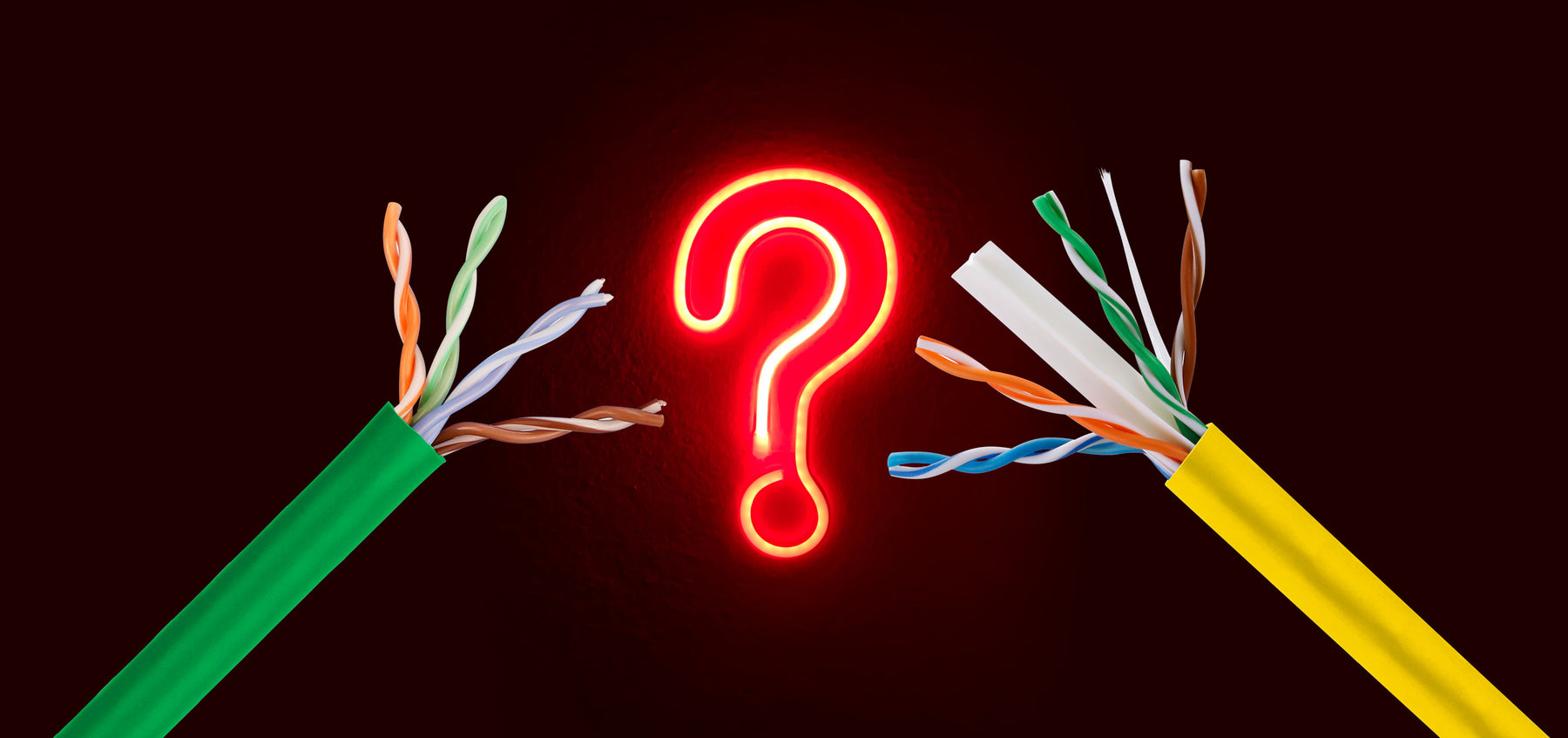
CAT5e vs. CAT6 which should I buy?
The difference between CAT5e and CAT6 is based on technological advances over the past decade and the need for faster networks. CAT5e has been around for over 19 years, it has paved the way for networking using RJ45 connectors to servers and to the respective modems or internet service providers. CAT6 has been out a few years less than its counterpart CAT5e but uses the same RJ45 connectors and serves the same purpose but at a higher rate of speed without as much cross talk or interference.
I know what you are thinking what is “crosstalk”? And what makes the CAT6 cables faster? The best way to describe cross talk is to think of being in a restaurant where there are people talking and waiters walking around with dishes clinking and all of that white noise that we associate with our regular dining experience, that white noise is what I would associate being the electromagnetic signals that emanate from cat cables on a daily basis. Now think Happy Hour during Monday Night Football at the same restaurant all of the regular noises are amplified by 10 due to the bigger, rowdier crowd, this level of noise is equivalent to a bunch of cat cables that are close to one another within a computer networking hub causing “crosstalk.” When cat cables are together in a hub in close proximity they feed off one another causing slower speeds, loss of connectivity and increased errors, etc. CAT6 cables are made with thicker jackets and thicker inner jackets helping shield the interference and “crosstalk.”
As the basic law of physics goes what goes up must come down, so as great as the thicker jackets are that make CAT6 faster and help eliminate some of the “crosstalk,” it also makes them stiffer than and not as flexible as the CAT5e cables. So before you purchase your network cables think about what you are using them for, if it is for home use or limited work stations CAT5e cables would most likely do the trick. If you are a larger business and have many work stations the good news is CAT6 is a standardized twisted pair cable for Ethernet that is backward compatible with CAT5/5e. What this means is that a businesses with multiple computer stations as well as more equipment that may need to plug into the network to be able to use CAT6 cables to run into the server hub but CAT5e cables running to the workstations.
If you are like me you have a need for speed, whether it is a faster internet, a faster way of doing things so you may be thinking how much faster the CAT6 is compared to CAT5e? Here is where it gets tricky this all relies on your internet connection. I’m sure you have seen the commercials promising faster internet speeds and larger bandwidth capabilities which all sound great but the reality is that the United States average internet connection speed is 55 Mbps (according to fastmetrics ™ Average Internet Speeds By Country*). Both CAT5e and CAT6 can handle 1000 Mbps. So until the connection speeds amp up the main difference between CAT5e and CAT6 is that CAT6 bandwidth is two times faster at 250MHz than the CAT5e performance of 100MHz. This means that the CAT6 cables process more data than the CAT5e. Think of it like traveling down a four lane freeway in Los Angeles with all the cars representing the data being processed, all of a sudden it merges down two lanes with the same amount of cars. CAT6 is the four lanes and CAT5e is only two lanes so when there isn’t a lot of traffic or data to process the CAT5 will be sufficient but once rush hour hits you need that CAT6 four lane highway bandwidth to reduce the time in traffic.
When you are choosing the right cable there are many things to consider. What is the network speed that is required? How many stations will there need to be plugged into the network? Do I have to run the cable in tight places where I need the cable to be more flexible? The list goes on and on as to what to consider but in the age of technology things are always getting better so in my opinion if you are running network cable underground or in walls or hiding it in anyway making it more difficult to replace use CAT6 with the better technology. If hiding the cable is not an issue then for most small scale applications the CAT5e will suffice for a while until the technology grows past CAT5e.

Leave a comment